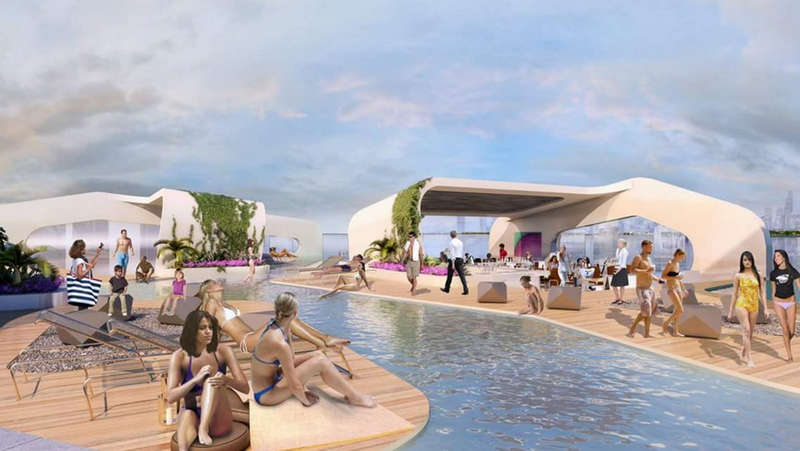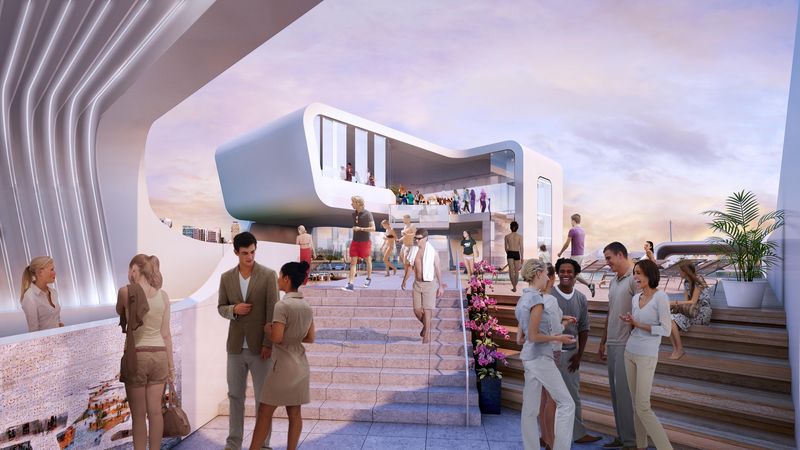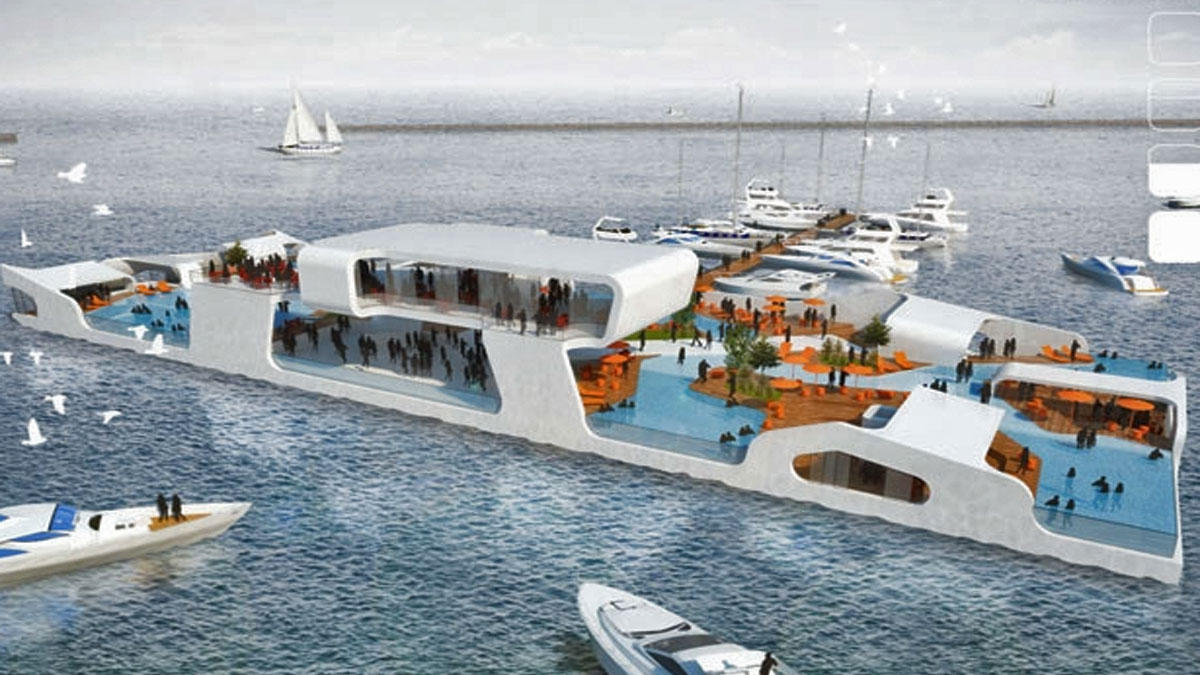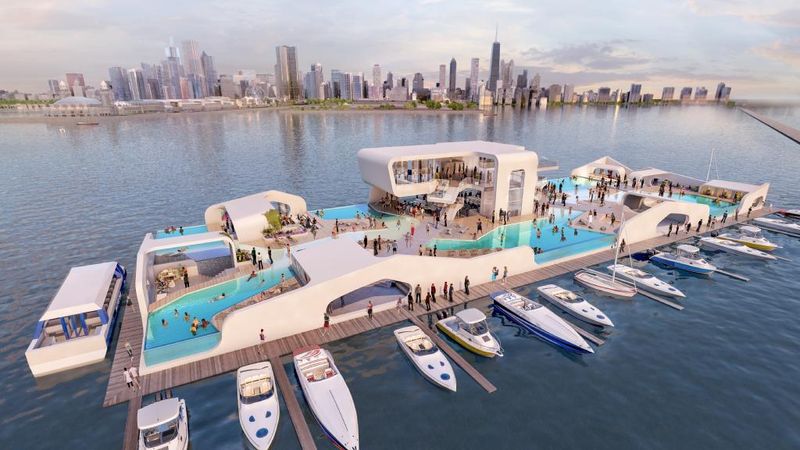It’s almost summertime in Chicago and that means plenty of outdoor activities. The team behind Breakwater Chicago has given us a look into new renderings of their floating vessel project, Breakwater. First proposed in 2014, Breakwater is essentially a floating 300-by-100 foot party barge that features outdoor decks, swimming pools, stores, bars and restaurants.
This floating vessel would have the capacity to hold up to 2,000 people and would be anchored about a mile offshore from Erie Street and Lake Shore Drive, inside the Lake Michigan breakwater. The founders of this project want the to vessel to be “truly at harmony with its environment” and therefore are focusing much of the design and construction on sustainability.
The company’s website explained their sustainability plan in fuller detail:
- Help control nutrient levels in the waters of Lake Michigan
“One way that we can help control high levels of unnatural nutrients is by installing our revolutionary GreenHull™ system on the bottom of our vessel. This underwater garden acts like green roofs on top of buildings, only instead of absorbing CO² from the air, our plants will be absorbing potentially dangerous nutrients from the water, thus improving the conditions of Lake Michigan.”
- Highlight water conservation techniques and technologies
“Our vessel will be designed for highly efficient water usage and will become a prime example of the techniques and technologies that businesses and homeowners should consider for their own usage. Technologies such as low-flow fixtures, waterless urinals, two-stage flushing toilets, grey-water recycling, and rain harvesting are just a few of the examples planned for use at the Breakwater Chicago vessel.”
- Utilize renewable energy wherever possible to reduce fossil fuel consumption
“Breakwater Chicago will use renewable energy systems to reduce its consumption of fossil fuel, including such technologies as solar photovoltaic, solar water heating, aqua thermal cooling, and potentially even kinetic wave power (image left). Some systems on board our vessel will require the use of traditional fuels, and in those cases, we are dedicated to using the greatest amount of biodiesel and other biofuels possible to maintain a small ecological footprint.”
- Follow LEED standards wherever possible to ensure efficient design
“While USGBC has not awarded LEED Certification to a vessel, we have been informed by the Council that, if we are able to achieve the appropriate number of points on their scale, we could be awarded certification and become the first floating LEED Certified project anywhere in the world.”
- Employ energy-efficient technologies and systems in all facets of design
“The Breakwater Chicago vessel will be designed with energy-efficiency as one of the focal points, given the impact that reducing energy consumption can have on every other facet of this Sustainability Plan. For example, by capturing the exhaust heat from our generator systems, our vessel can lower its overall energy demands by utilizing what would otherwise be wasted heat. This heat can then be used in a process called trigeneration, or the combining of heating, cooling, and electrical generation such that wasted heat from one process is used to feed another.
6. Create a recycling program that pushes past the traditional blue bins
“Operations at Breakwater Chicago will be guided by a strict recycling program that not only captures easily recycled materials such as cardboard, glass, metals, and plastic, but we will also have a process to capture and recycle food waste as well.”

Image via Breakwater Chicago

Image via Breakwater Chicago

Developers need an estimated $23 million for the project including private investments and crowdfunding appeals, as well as city, state and federal approvals to complete the project.
Check out more info about the project in the video below.
Article Written by Mila Medonaite for Design Engine, April, 15 2016


